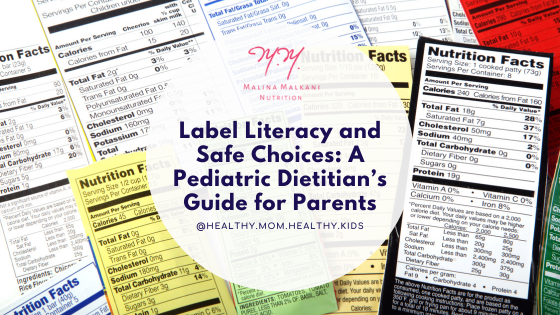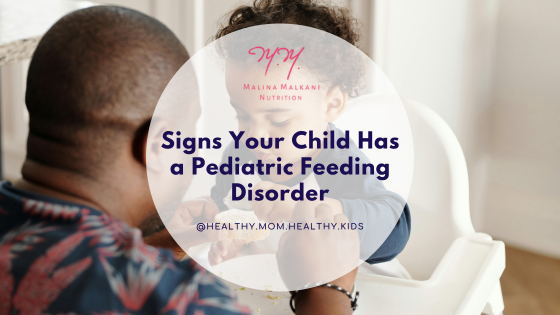What to Feed Your Baby During an Emergency or Power Outage
Emergencies can happen anytime, to anyone. Getting prepared in advance for an emergency can seem like a daunting task, but even more overwhelming is caring for and feeding a baby under these circumstances when you’re not ready for them.
Depending on the type of emergency taking place, it’s helpful to have items ready to grab and go and/or stored for times when it’s necessary to hunker down at home. In the case of a power outage, you could be left with no refrigeration resulting in the need to depend on non-perishable foods for yourself and your little one.
Here are some tips on creating an emergency plan, and some ideas for what to feed your baby during a power outage, emergency or other unpredictably hard time.
Creating an Emergency “Leave Bag” and “Stay Kit”
Creating an emergency “Leave-Bag” is a simple task you can complete to ensure that you and your family stay safe and comfortable when natural disasters happen. It may seem overwhelming to put together a bag of everything you may need during these times, but often, the most stressful part of putting together an emergency leave-bag is getting started!
When you’re creating this leave-bag, it’s best to keep it simple and stick to the basics and essentials. Here are some ideas of what to pack in a leave-bag for you and your little ones:
Important documents (birth certificates, passports, etc.)
Flashlight
A week's supply of any medications needed
Water bottles
Non-perishable snacks
Change of clothes for each family member
Baby feeding supplies (bottle, formula, baby food)
Diapers and wipes
If you have pets, don’t forget to add a couple days worth of food for them, as well as a water bowl and leash!
In the event that you may not need to evacuate, but rather shelter in place, having a “Stay Kit” is helpful. Most items that are in a leave-bag can be used as a stay kit, but it’s a great idea to have both. The New York Times suggests keeping a two-week supply of bottled water, non-perishable food, toilet paper, and personal hygiene supplies, as well as a flashlight, candles, trash bags, and extra blankets.
Add to and replenish your leave-bag and stay kit as needed. Remember that you don’t have to acquire everything at once! Even just having the basics to start with and adding to it when you can, can help you feel at ease if something were to happen.
Creating an Emergency Food Plan + Shelf Stable Foods to Keep on Hand
When there is a power outage, most appliances stop working, putting your perishable foods in the fridge and freezer at risk for contamination. According to the CDC, in the event of a power outage, refrigerated foods will stay safe in the refrigerator for up to 4 hours, and frozen foods will stay safe for up to 48 hours in a packed freezer and up to 24 hours in a freezer that is half full.
Creating an emergency food plan and keeping shelf-stable foods on hand will help you feel confident that you’ll still be able to feed your baby in the event of a power outage.
Aim to stock up on shelf-stable foods that your family normally eats, and plan for at least a few nutrient-dense meals as best you can. Remember though that emergency food plans are for short-term emergencies…meals don’t have to be perfect and fed is best!
***Tip: Want this info in a FREE downloadable PDF? Download my FREE Guide to stocking your pantry with nutrient-rich, baby-led feeding essentials.***
Below is a list of nutrient-rich, shelf-stable foods to keep on hand and that work well for babies. While some of these foods are ready-to-eat, others require some sort of a way to cook which is possible for some in the event of a power outage - use your judgment to determine which are best for your family and situation. These foods also offer a variety of important nutrients, making it easy to prepare balanced meals for your little one even when it seems impossible to do so.
Iron-Rich Protein foods:
Canned salmon
Canned sardines
Canned, low-sodium legumes (black beans, kidney beans, cannellini beans, chickpeas, chili beans, navy beans, pinto beans, lentils)
Shelf-stable containers of hummus
Bean-based pasta (chickpea, red lentil)
Grains:
Whole grain pasta (penne, farfalle, shells, bowtie)
Dried grains (quinoa, millet, freekeh, barley, whole wheat couscous)
Quick cooking oats
Teething crackers (top with canned salmon or a thin layer of nut or seed butter)
Fortified baby-friendly breakfast cereals (Cascadian Farms Purely O’s, plain Cheerios - for younger babies, soak in a little infant formula or some plain soy milk)
Sorghum and/or peanut puffs (Littlemore Organics, Mission Mighty Me)
Nuts and Seeds:
Chia seeds
Hemp hearts
Ground flax seeds
Creamy peanut butter
Creamy almond butter
Creamy cashew butter
Tahini
Peanut powder
Almond flour
Hazelnut flour
Fruits & Vegetables:
Canned fruits (peaches, pineapple, or red grapefruit in water or 100% juice)
Fruit/veggie pouches - look for types with added benefits such as protein, fiber and omega-3 fatty acids
Dried fruits (dates, apricots, raisins, cherries, prunes, mangos, pears)
Freeze-dried fruits (pears, apples pineapple, strawberries, mangos, bananas)
Jarred applesauce
Canned green beans
Canned 100% pumpkin puree
Canned peas
Low-sodium tomato sauce
Liquids:
Extra infant formula (if applicable; also helpful for making oatmeal, chia seed pudding, etc.)
Shelf-stable, plain soy, flax, hemp, or other plant-based milk alternative (for cereal, oatmeal, chia seed pudding, etc.)
Canned coconut milk
Also important to remember while preparing an emergency food plan, is that many water filters don’t work during a power outage, so be sure to add bottled water to your list of items to stock up on, too.
It’s easy to think that you may never need an emergency leave-bag or two weeks' worth of food storage, but keeping our babies safe, healthy and fed is always a top priority, and being prepared for the unforeseeable is so important in order to accomplish this goal.
Start today with items you already have in your home, and add to it as you can. Being prepared even a little bit will help you feel more at ease and confident that you’ll be able to take care of yourself and your baby during a power outage, or any other emergency situation.
Cheers to your good health! xo Malina
Before I sign off, if you’re looking for someone you trust to provide a complete roadmap for your baby’s entire solid food feeding journey and allergen introduction plan, check out my new baby-led feeding + food allergy prevention cookbook! Safe and Simple Food Allergy Prevention: A Baby-Led Feeding Guide to Starting Solids and Introducing Top Allergens offers 80 recipes, 8 weeks of meal plans, tons of balanced baby meal ideas, a complete plan for top allergen introduction, and lots of guidance (with photos) on how to safely serve each food, this book contains everything you need to know about starting your baby on solids foods and reducing the risk of food allergies.
For more tips on feeding kids, grab my FREE guide to reducing picky eating, and if you are looking for help navigating picky eating behaviors in your toddlers, preschoolers, and school-age kiddos, check out my pediatrician-endorsed online course, Solve Picky Eating, a self-paced set of 12 modules that are delivered quickly in 5-15 minute videos.
And if you're looking for personalized nutrition support for yourself, your babies, and/or your kids, I am currently accepting new clients in my virtual private practice. Looking forward to meeting you online!











Turn mealtime stress into fun! Try 20 playful food games to help picky eaters explore new foods through sensory play. No pressure, just curiosity!